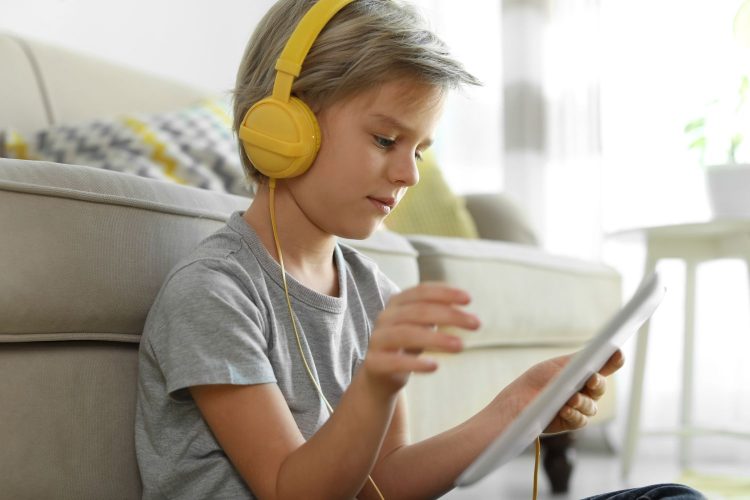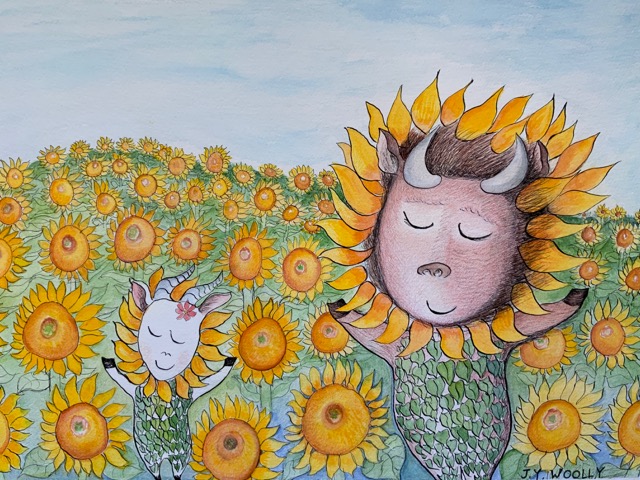Chances are, in the next month, my kids will spend more time on digital devices than I would like, I will eat an egg that is not organic, I won’t hug my friends (I might not even see them!), and I will miss my studio practice immensely. These are just a few of the changes that I already feel coming…
Navigating this period as a parent may be an astonishing one. For many of us, our kids have no school. They are not just off and virtually learning, they are “off” completely for the foreseeable future. No matter what your situation, the change that many of us realize is that we are now the teachers. The good news is that it is possible for us to be good teachers during this time, as long as we can adapt to change.
Technology
There are innumerable free online resources that engage children with academic content. More importantly, many online resources can enable healthy, social interactions that we know our kids will crave. Imagine a book club among a few friends where they read a book, then engage in conversation in Google Hangout. For my friends who seek to unplug, these resources will require some letting go. I know I will have to, but I can already see the isolation my kids feel from not being able to see their friends, so the small sacrifice of a little more screen time may be worth it.
Writing
In the winter of 1978, Massachusetts experienced a blizzard that closed schools, businesses, and roads for nearly two weeks, which then bled into February vacation. For three weeks, I was not in school and wrote in a journal every day. Similarly, my daughters have a journal (a simple composition notebook) that I am asking them to write in daily. If they share what they write, great. If they want privacy, that’s okay too. I am just checking to see that they do it. These are unprecedented times and warrant reflection and documentation. Yesterday, my 11-year-old wrote about boredom: no team sports, no friend visits. Though we kept busy, knowing that she wrote about being restricted from doing things she loves was unsettling. Try this:
- Every day, ask your child to write about what you did and how you felt. Include illustrations. Be specific so that one day, when you go back and read this, you will recall the experience more completely. (Let children experience days they don’t write as much, which will happen as the days wear on, and they adapt to new feelings and experiences.)
- While my children are writing letters to friends and sending them over email, my students will do this using vocabulary words, which stretch their imagination and usually creates humor.
Reading
In my humble opinion, there is nothing more valuable than reading anything. Whether your children are avid readers or not, this is the best “academic” experience you can support. I have asked my kids to read at least an hour per day – this time can be divided into chunks or done all at once. Novels, nonfiction, magazines, news articles, graphic novels; on a kindle, in a physical book, or online; reading is reading. For children who resist reading, read-alouds or audibles are also invaluable.
Outdoors
A few of our friends have made road trips to places that remove them from temptation to interact with others and put them in environments where they have ready outdoor access. This is a privilege, but one that counts if it is possible. Parents can continue to work remotely and, most importantly, everyone gets outside. Even if you can’t steal away, don’t forget to get outside! No matter what grade they are in, children are used to spending over an hour a day outside for recess, and many of them participate in an after school sport. Try this:
- Go for hikes, walks, or bike rides. Play a game of family soccer, or throw a lacrosse ball against a wall. Walk your pet. If both parents are working, this can be challenging, but also a point of change: your workout can become the activity you do with your kids.
Extracurricular Activities
Games, drawing or art projects, and cooking are all necessary to support an unplugged experience. I am a big fan of taking advantage of this time for our children to experience boredom, get comfortable with themselves, and to learn to self-advocate and self-direct.
- Create a time-lapse video of cooking in action, or experiment with different recipes. Host a virtual party where you can show off your baked goods live. Tell your kids they might even freeze some for a future, in-person party!
How do we become teachers? Here are three steps that help provide structure and practice patience:
- Make a plan. Structure can come in the form of technology, as well as a daily schedule and/or requirements. If you design a list of “must dos” for each day that your child is not in school, chances are s/he will thrive because they are used to this structure in school. Don’t assume they will see structure that lies in your head space. Write it down so they can see it daily.
- Be patient. Patience comes slowly and with practice. Be patient if you are letting your kids use devices more than usual (I get this low-gut anxiety when I feel like my kids have been looking at a screen for too long); be patient when they whine that they are bored; be patient when they ask why they can’t do the things they normally do. In other words, be patient with the fact that our kids do not have the same coping skills that we have.
- Practice ahimsa! As a parent, you are already the primary teacher in your child’s life. It is good for our children to see us as vulnerable and honest, navigate change, and be kind to ourselves.
Over the course of the next month, I will be virtually teaching English and Social Studies to a class of fifth graders, children who are not my own. While they (and their parents) are lucky that some structure is in place, many of them will struggle with the lack of physical and social engagement. For that reason, I believe that for us, as parents and teachers, social interactions should be a primary goal.
Below is a list of online resources for various academic and social engagement, and some activities you can try out at home. Whatever you decide to do, believe in yourself as their teacher. We are all in this together!
- Khan Academy
- Newsela (a great online resource of current and archived news articles that are scaffolded for various reading levels)
- TypingClub
- Vocabulary.com (or Flocabulary, which uses rap music to teach vocabulary and even math)
- Outschool.com
- Time for Kids articles















One reply on “We Are All Becoming Teachers”
I was in Massachusetts for that blizzard as well. What a fun memory from my childhood. I hope mine feel the same way looking back at this time. Thank you for these valuable tips and resources!